Writing the Script
The brief for Professor Ray Laurence was to write a script of 140 words and to put into that 140 words as much content as possible. Sounds impossible, after all, most academic articles are around 8,000 words or more.
Here is the script for the film - 143 words in total:
In the 18th century, a frieze was discovered in Pompeii that provides insights into the daily lives of the inhabitants of that city 2000 years ago. Interestingly, the majority of figures in the frieze are women doing things in public, sometimes accompanied by children. Here, we see a scene of shopping – which, because of the columns behind the figures, we think takes place in Pompeii’s forum. The actions of women interacting with male traders, which shows their agency in selecting goods to add to their housefuls of objects: textiles, bronze pots and pans are for sale. When we look at the objects found in the houses of Pompeii, we need to consider how they were purchased or inherited and to resist a default that might suggest Roman men entirely shaped the archaeological record.
Elements in the film
1) Shoppers and Stallholders
The main evidence for shopping comes from a frieze in a block known as the Praedia Julia Felix that was excavated in the middle of the 18th century and was re-buried. The house was only fully re-excavated as recently as 1951. The Praedia Julia Felix takes its name from a painted rental notice that can be seen in Episode 1: Pompeian Streets. The early excavators discovered a frieze at a height of 2.47m that depicts people of different ages and genders in the act of shopping. Clearly it was viewed from the height of an adult male in Pompeii at 1.64m or an adult female at 1.54m. Unfortunately, the whole frieze was not recorded and what remains to us, now displayed in the National Archaeological Museum in Naples are a series of parts of the frieze; which were cut from the wall and framed as individual scenes. We don’t know how they relate to each other. However, what they do is allow us to see the representation of Pompeians going about their business in public. Looking at the background of columns and statues, we place this important piece of evidence in the forum. To see more images of this frieze www.pompeiiinpictures.com.

Section of the Frieze showing Shopping in Pompeii. Image by Wmpearl, Public domain, via Wikimedia Commons
2) The Forum
The Forum was created prior to the foundation of the Roman colony in Pompeii. Thus, the Forum is an example of architecture of an Italian city and it would be wrong to say a Forum was distinctly Roman. Although the Forum resembles a modern piazza or civic square, it was much more than this – it was a place for the worship of the gods with the addition of a new Capitolium, built by the Roman colonists, housing the gods: Jupiter, Juno, and Minerva. Represented in this frieze from the Lararium (household shrine) from the House of Caecilius Jucundus. It shows some of the activities associated with the sacrifice of animals as well as an indication of the statues associated with the Capitolium. If you look carefully to the left hand side the Forum in our film, you will see some builders at work reconstructing a temple after the earthquake of 62 CE, you might also spot the inscriptions on two of the buildings to the left - one built by the priestess Mamia and another built by another priestess Eumachia. You can explore these structures further by checking out pictures of this area of the archaeological site via www.pompeiiinpictures.com

Representation of the Forum in an Earthquake from the House of Caecilius Jucundus. Image by Carole Raddato from FRANKFURT, Germany, CC BY-SA 2.0 https://creativecommons.org/licenses/by-sa/2.0, via Wikimedia Commons
3) Still Life Paintings of Perishables in the Market Building and in Homes
Still-life paintings of combinations of produce, mostly perishables, have been found both in the Market Building (or Macellum) and in the homes of Pompeians, including within the Praedia of Julia Felix. Today, in the National Archaeological Museum in Naples – a whole wall is preserved with from this house with four still life panels, one of bread, a second of fish, a third of eggs and game birds and a final one of money and writing materials for accounting for expenditure. It is striking that these images are found both in the Market Building (Macellum), where we know perishables were for sale from bones discovered in drains.

Drawing of the Still Life Frescos from the Praedia Julia Felix, published in the 18th century. Image by Fondo Antiguo de la Biblioteca de la Universidad de Sevilla from Sevilla, España, CC BY 2.0 https://creativecommons.org/licenses/by/2.0, via Wikimedia Commons
4) Women and Children in the Forum
The frieze from the Praedia Julia Felix represents the action of sellers and shoppers. Most of the sellers are men, whereas the shoppers are female adults often accompanied by children. This is important evidence that places women and children in the forum and also purchasing goods to incorporate into their homes. This has implications for how the archaeological record was formed -women as shoppers added to the material objects of a household. Hence, when we examine the objects found in a Pompeian house, we need to think how those objects were acquired in antiquity, either via inheritance or through the action of shopping. This causes women to have agency in the creation of their houseful of objects. Thus, although Roman society was deeply patriarchal, there was a place for women to have agency in the creation of a houseful of goods. The Still-Life fresco of money and writing instruments from the Praedia of Julia Felix is particularly relevant, when contemplating the lives of women running households and recording the expenditure of their household, including that of simply purchasing goods via shopping.

Still-Life of Money and Accounting from the Praedia of Julia Felix Image by Following Hadrian, CC BY-SA 2.0 https://creativecommons.org/licenses/by-sa/2.0, via Wikimedia Commons
5) Slave Auctions and the Role of Criers in the Soundscape of the City
Shopping in antiquity also involved the buying of slaves – humans but legally possessions of others in antiquity. Lisa Fentress posited the theory that the largest building in Pompeii’s forum, known today as the Eumachia building, could have been utilised as a structure for slave auctions with space to display the human goods on sale. Article is behind a pay wall, but you could request a copy from the author via this link, if you do not have access via a Uni Library. We placed in front of this building in the film, the figure of the crier or praeco advertising the auction of slaves. Sarah E. Bond has shown that these criers were an important part of the soundscape of the ancient city and, that, although not of high status these individuals served a key role in the functioning of cities. You can read the relevant chapter from Sarah’s book on criers and their role in the soundscape of the ancient city by clicking on this link.
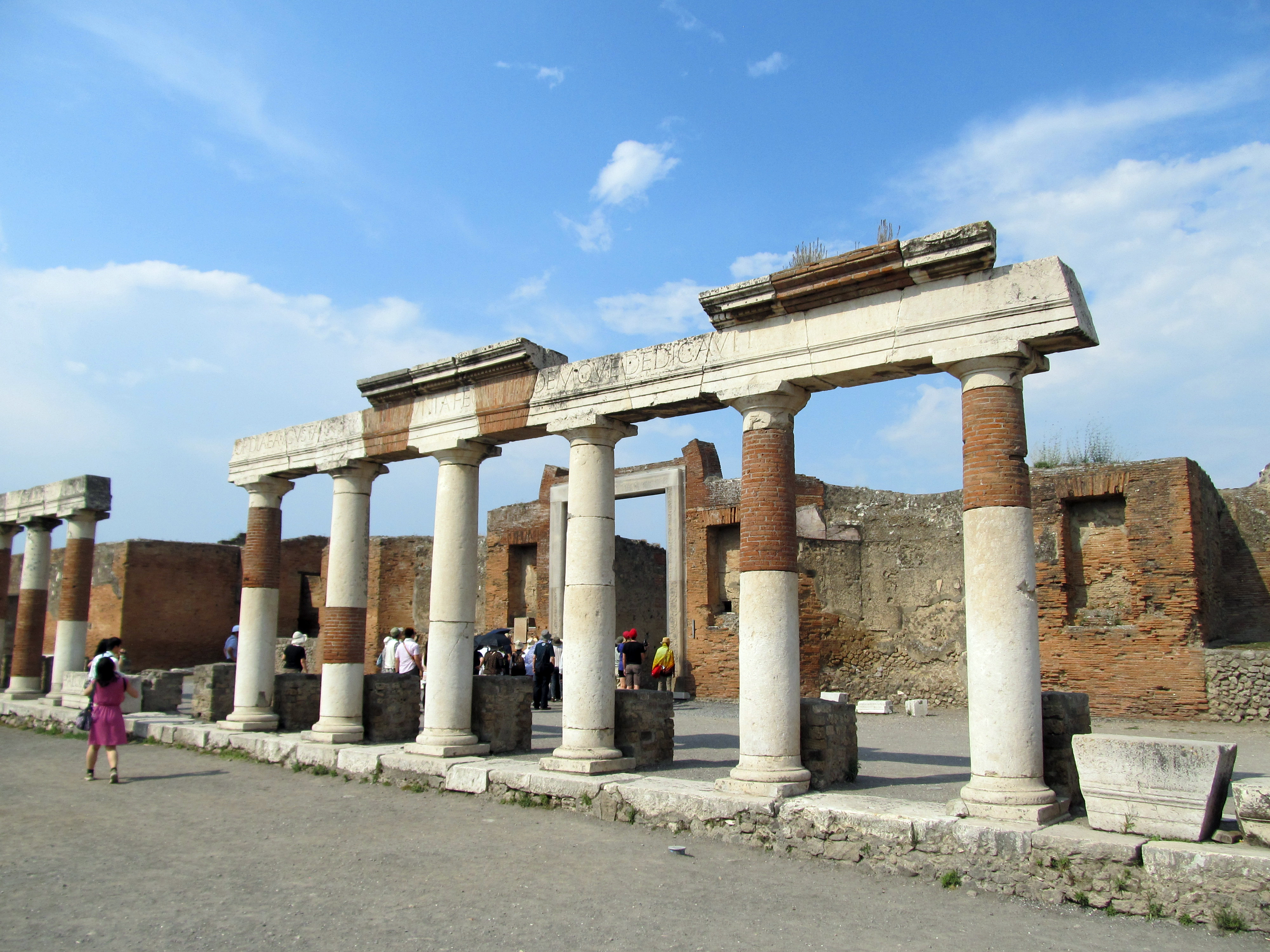
The Entrance to the Eumachia Building. The inscription sets out the elements of this complex: “Eumachia, the daughter of Lucius, public priestess, in her name and that of her son Marcus Numistrius Fronto made the chalcidicium, the crypt and the porticus dedicated to Concordia Augusta and Piety and the same two dedicated these”. Chalcidicia were associated with auctions in other cities in Campania
Image by daryl_mitchell from Saskatoon, Saskatchewan, Canada, CC BY-SA 2.0 https://creativecommons.org/licenses/by-sa/2.0, via Wikimedia Commons.
6) Loaded Dice and Portable Sundials
The animators wrote to Ray with a request, please could we have someone selling something dodgy. After some further discussion about dodgy watches, the team decided to drop in a reference here to portable sundials and loaded dice. Richard Talbert has recently researched Roman portable sundials that were used by travellers to know the hour of the day. These remarkable devices need to be better known and this link will take you to some further reading on this. The other element here is loaded dice, a topic carefully studied by Ellen Swift, by testing Roman dice to the standards set to regulate modern casinos. She found that plenty of Roman dice were loaded to the six with three dice or 666, this was known at Rome as the Venus throw. The owners of loaded dice could through a slight of hand, substitute these for unloaded dice to defeat their opponents. You can read more about Ellen Swift’s findings here. There are frescoes in the so-called Bar of Salvius that are some of the best evidence from antiquity for dice playing even with speech bubbles to replicate the conversation. Pompeii in Pictures has captured these for you to explore.
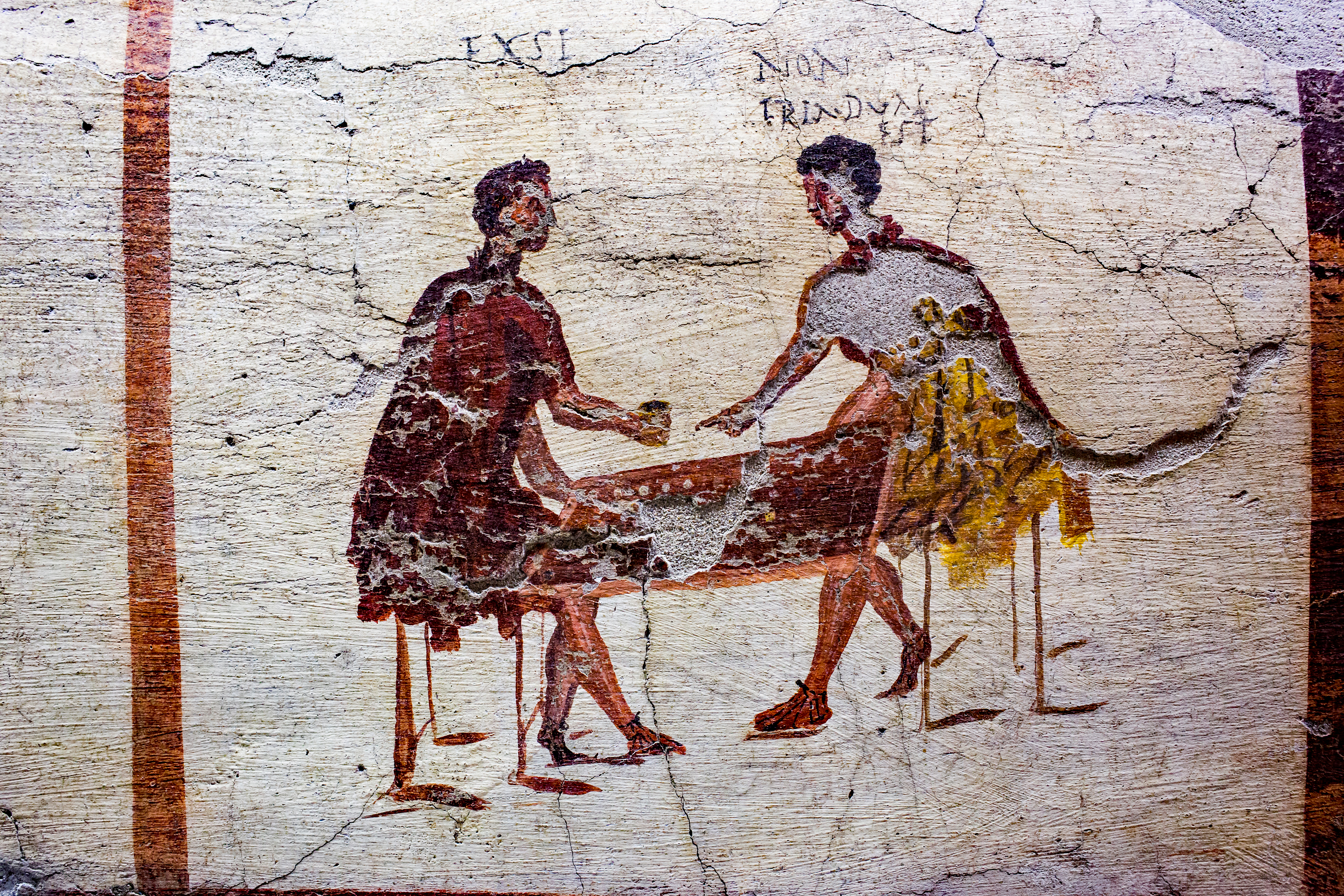
Fresco of Dice Players from the Bar of Salvius - Pompeii
Image by ArchaiOptix, CC BY-SA 4.0 https://creativecommons.org/licenses/by-sa/4.0, via Wikimedia Commons
7) The Regulation of Weights and Measures
The measurement of weights to ensure that measures were fair, alongside the measurement of dry measures or modii, was essential for the sale of goods. One of the finds from the forum of Pompeii is a stone with a series of semi-circular cuts in it, each of a different dimension that would correspond to a standard weight. This is called a Mensa Ponderaria. Weights are also found in many houses in Pompeii and we can associate these homes with actions of sale or of checking goods sold actually corresponded to the weight stated. The Mensa Ponderaria from Pompeii is also significant because we can see that the Oscan names for the weights have been crossed out and Latin names have replaced them. We can also see that the holes have been made larger. This change in weights did not occur, when the Roman colonists arrived but some 80 years later at the time of the emperor Augustus - 27 BCE to 14 CE. The annually elected pair of magistrates, often young men, known as aediles were responsible for the regulation of the market. Most of our knowledge about aediles comes from the electoral notices painted across the city.
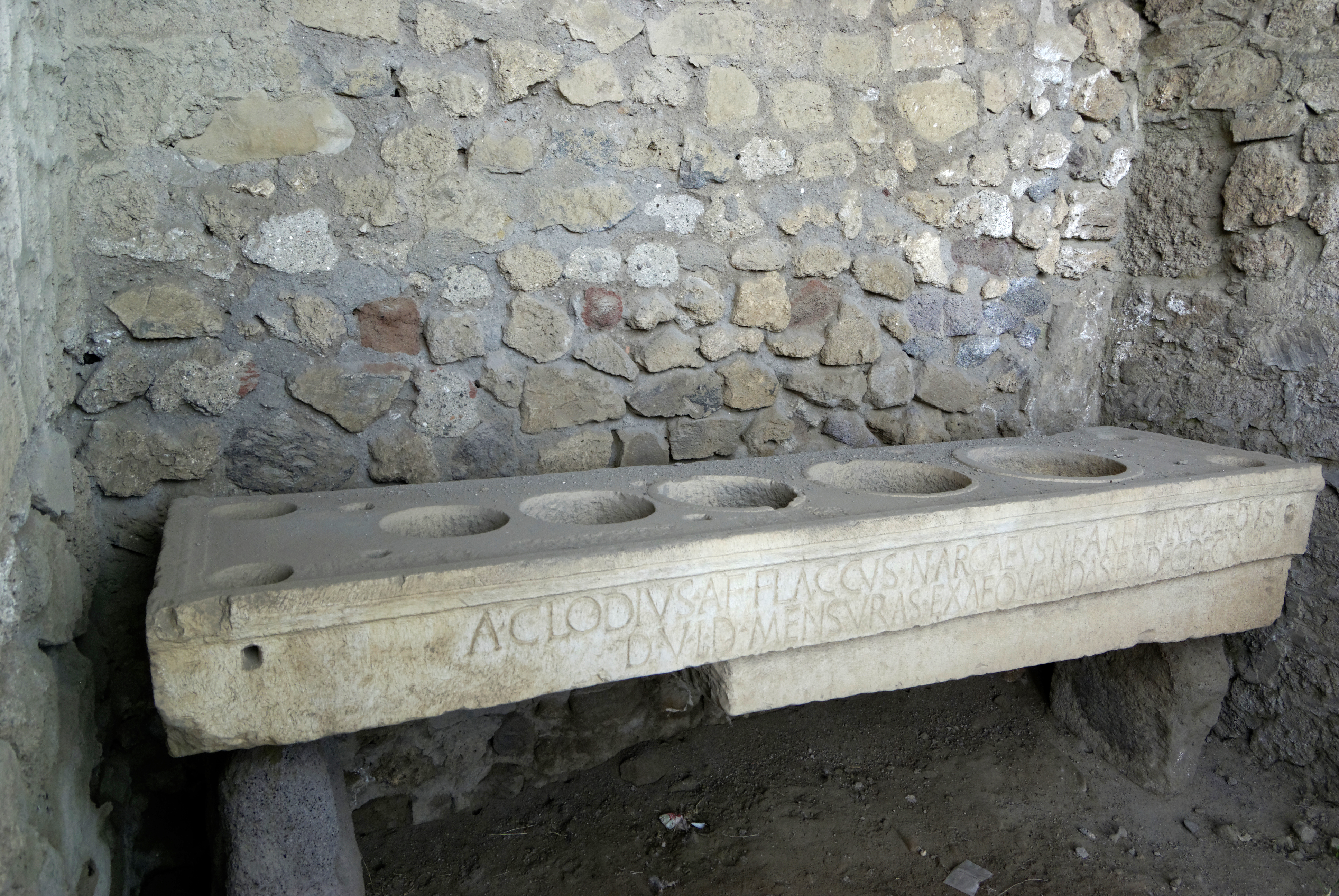
Mensa Ponderaria for the regulation of weights. Image by Berthold Werner, CC BY-SA 3.0 https://creativecommons.org/licenses/by-sa/3.0, via Wikimedia Commons
8) Is that a guide dog?
In part of the frieze from the Praedia Julia Felix, there is a scene that shows a man with a stick, accompanied by a dog on a red leash. The man has been interpretted as a beggar, who seems to be interacting with an adult woman accompanied by another woman of lower stature - a child? Compared with the other pairings in other scenes from this frieze - this one seems to be characterised by less eye-contact and it has been speculated that the man could be visually impaired. Hence, it is thought that this may be the earliest visual evidence for a dog being used to aid a visually impaired person. The line-drawing made over 100 years ago shows the evidence more clearly than the original fresco that was excavated over 200 years ago. This article explains the significance for the history of dogs and their usage by the visually impaired.

Beggar and Dog - line-drawing of part of the frieze from the Praedia of Julia Felix.
9) How often were markets held in Pompeii?
A graffito in a bar lists the days of the week after the gods: Saturn; Sol, Luna, Mars, Mercury, Jupiter and Venus. These correspond to our days of the week from Saturday through to Friday. These are cross-referenced with places where markets were held on those days: Saturday in Pompeii; Sunday in Nuceria; Monday in Atella; Tuesday in Nola; Wednesday in Cumae; Thursday in Puteoli; and Friday in Rome and in Capua.The graffito referring to markets can be viewed via this link.. Unfortunately, the shop in which this graffito was found in 1916 suffered a major structural collapse in 2010 - you can see the catastrophic damage in the photographs here, as well of the recording of the graffito. The towns listed in the graffito show a series of towns not too far distant from Pompeii - you can reconstruct the journey times to each of these markets, using this resource. This will give you some detailed insights into travel to different markets set on different days on the Bay of Naples.
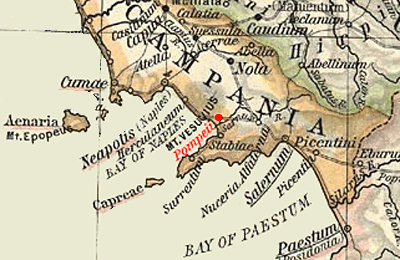
Map of Roman Campania - can you find the places of the markets for each day of the week? Image by Public Domain, https://commons.wikimedia.org/w/index.php?curid=425460
10) Paving in the Forum
The forum was paved with white limestone quarried from the outcrops to the south of Pompeii. It contrasts with the lava paving of the streets of Pompeii. Clearly, the Pompeians thought of the forum as a place for a different form of traffic than the streets. It was a place into which it was difficult to drive a cart - most of the entrances from streets were blocked off to traffic. Yet, these access point had to have enough space for processions to come into and out of the forum. Most of the paving of other forums in Italy was undertaken with limestone. The best preserved example of this paving can be found at Terracina in Italy, where the paving from the time of the emperor Augustus, 27 BCE to 14 CE, is still used in the city’s main piazza outside Terracina’s Cathedral that was previously the Capitolium of this Roman city.
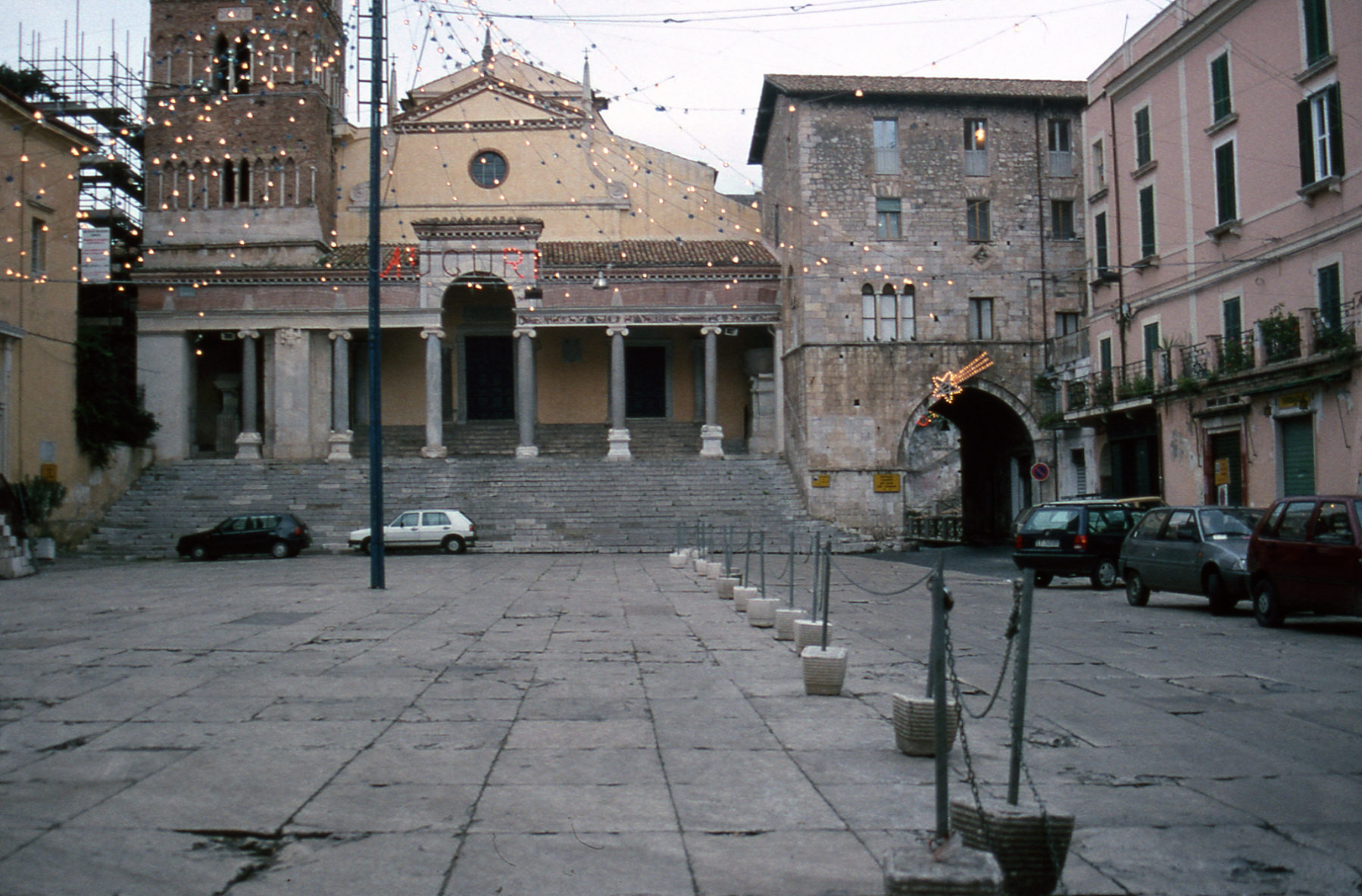
The Paving of the Forum in Terracina survives today infront of the Cathedral, formerly the Capitolium of this Roman city Image by Ray Laurence, CC BY-SA 4.0 https://creativecommons.org/licenses/by-sa/4.0
11) Referencing the work of Mary Harlow and Lena Larrson Loven
We reference two academics in the film Mary Harlow and Lena Larsson Loven. Their academic work on shopping, particularly for textiles, has been influential in the creation of the film. Ray worked with Mary for most of his career, publishing together on Growing Up and Growing Old in Ancient Rome, and she has ensured that he has not made some terrible mistakes! Mary and Ray recently edited the book The Cultural History of Shopping in Antiquity Lena Larrson Loven worked with Mary and Ray in the creation of a Roman families conference back in 2011, she has also been influential in the development of the Nordic network for women’s history andf gender studies in Antiquity ARACHNE.
For more information on the forum of Pompeii, ask Ray’s Book a question
Get a copy of The Cultural History of Shopping at Bloomsbury.
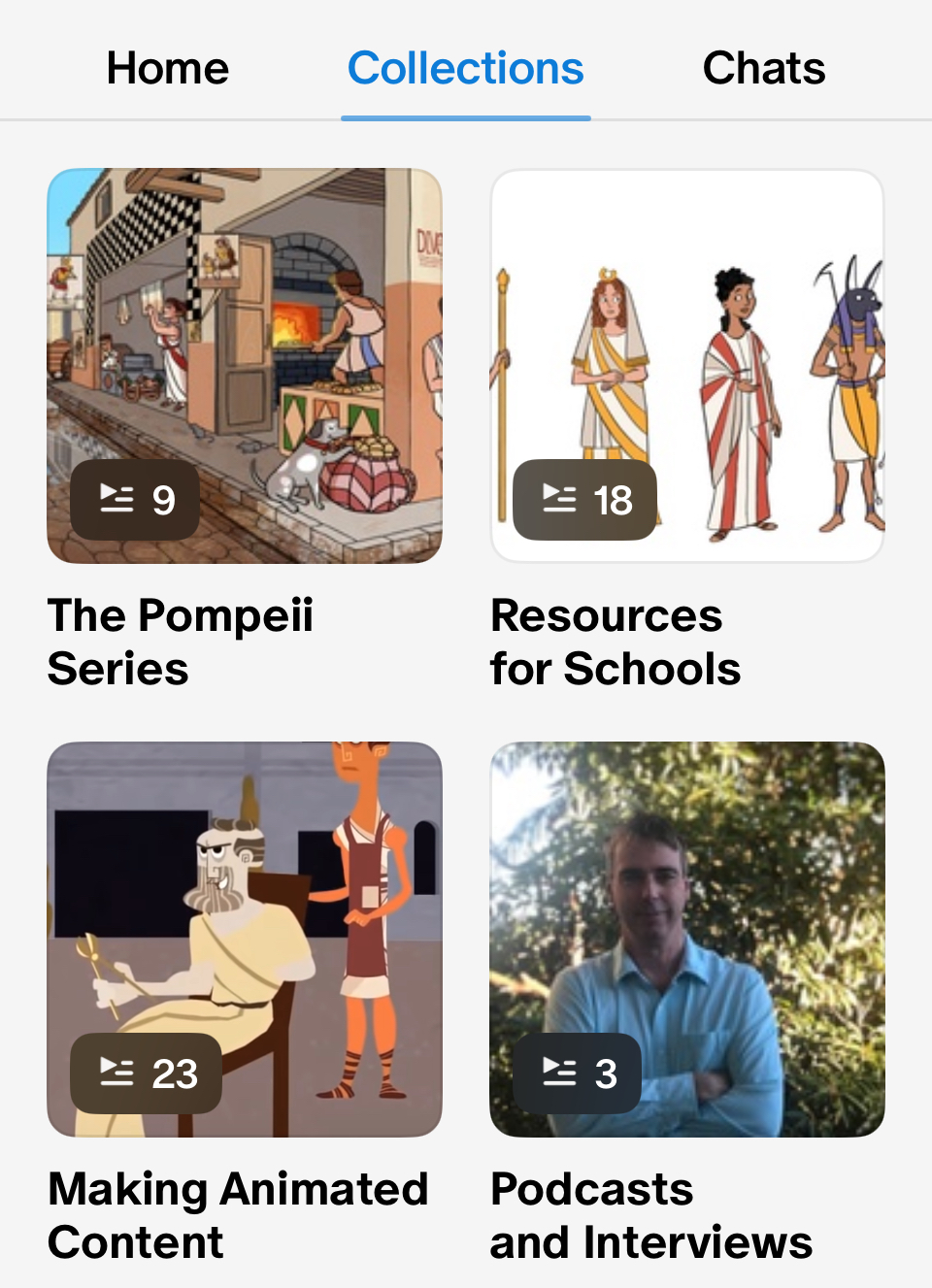
Donate
Our supporters on patreon allow us to develop more resources for teachers, explainers, and videos!
Donate on Patreon